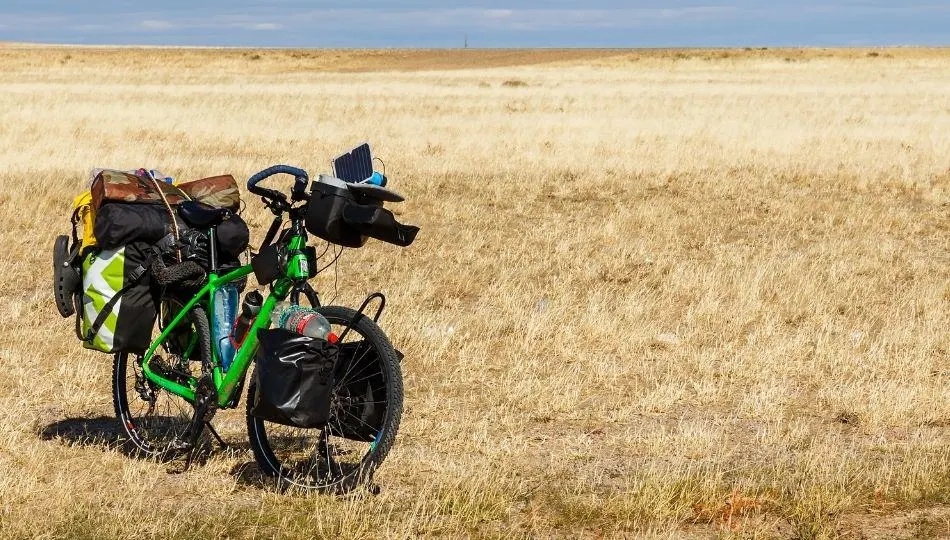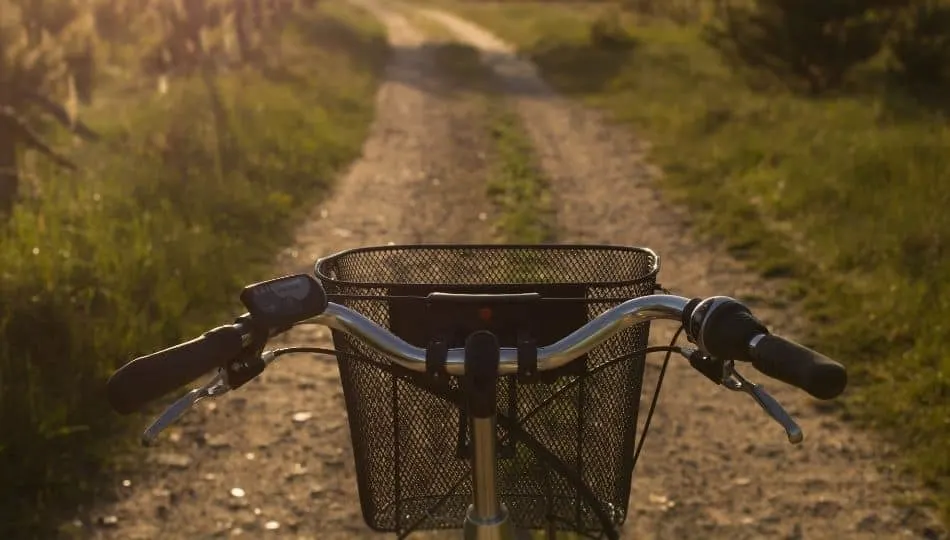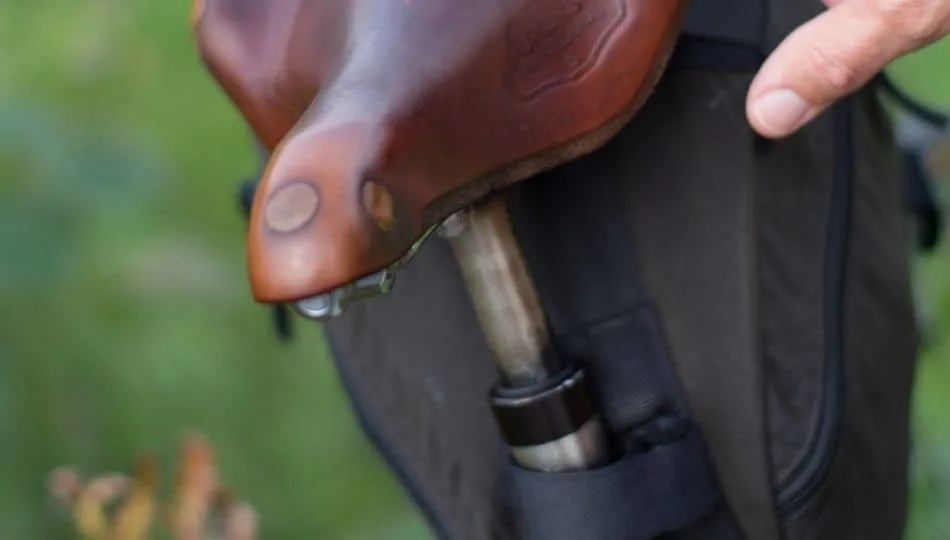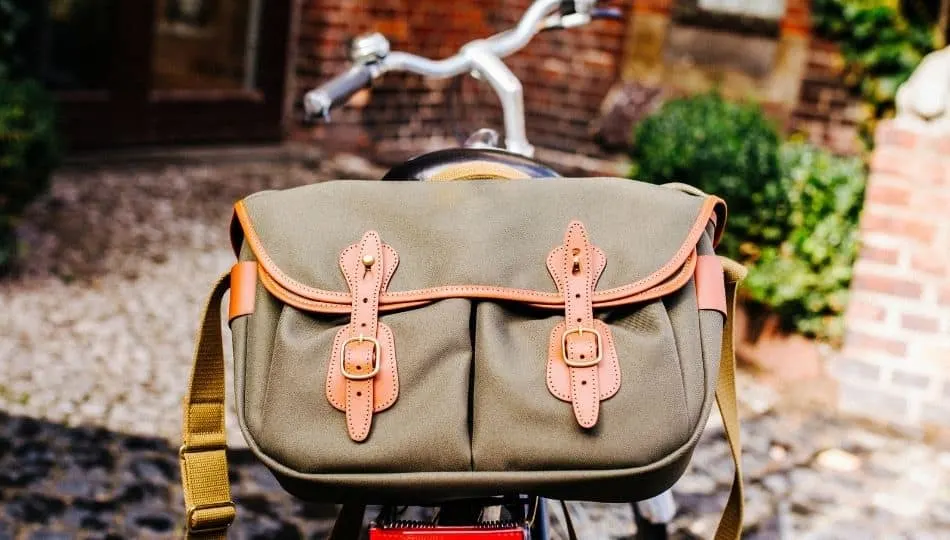
Running errands and transporting your belongings on a bicycle is something that has somewhat of a learning curve. It certainly was for me as a beginner, when all I had was my bike and an old backpack. So, if you’re trying to figure out how to secure your bag or storage to a bike rack safely, I’ll share some tips with you that I learned along the way.
If you want to secure your bag along with your bicycle to a bike rack, you must first choose a bike rack that has the capacity to support your luggage. You can also use compatible bicycle bags that make the job easier, more efficient, and more secure.
There are actually many different ways to secure your belongings on a bike rack. And there are also various pieces of equipment, storage systems and locks that can help you complete the job properly. Efficiently securing your bag to your bicycle is a necessary part of becoming an effective commuting cyclist. Read further to learn which choice is best suited to your needs…
Steps to Securing a Bicycle Bag onto a Bike Rack
While bicycle bags are excellent companions as storage systems for your belongings, you may not want to invest in one right away. Do not worry! You can still secure your bicycle onto your bicycle rack with two simple steps.
- Place your backpack horizontally on top of the bicycle rack. Ensure that your bag is snuggly laid flat on the bicycle rack.
- Use your bicycle rack’s clamp to secure your bag. Most bicycle racks include a clamp or rope. Use these to tie your bag securely to the rack. If your bicycle rack does not have these contraptions, you can also use your own rope or string. Securely wrap the material around your bag and your bicycle’s frame to ensure that it cannot fall off.
Although usual bicycle racks tend to be small in size and thin in appearance, they are actually fit for heavy-duty cargo carrying. Likewise, most bicycle racks have excellent versatility when it comes to compatibility with different bicycle bags and accessories. However, it is important that you first choose a suitable bicycle rack. While they are certainly strong and durable, they are definitely not invincible. Do not overwork your bicycle rack!
Different Types of Bicycle Racks
The most important thing to consider when choosing a suitable bicycle rack is your cargo. Are you planning to use your bicycle for daily errands? Or are you planning to use your bicycle as a construction carrier? There are two main types of bicycle racks available.
- Rear Bicycle Rack
The rear bicycle rack is sturdy and stable, usually meant for heavier loads. It gives you the option to either directly strap items onto the bicycle rack itself (which will be later discussed) or to attach a bicycle bag to the rack’s frame.
Generally, these racks with two support beams located on each side are able to support approximately 20 to 50 pounds, depending on which model you choose on purchasing. Here’s a great one on Amazon that has a max. capacity of 55lb.
If that is insufficient, some offer even greater capacity, with heavy-duty bicycle racks that can support upwards of 80 pounds of weight. Note that these bicycle racks usually have three support beams on each side rather than the usual two. Check this one out on Amazon with a whopping 310lb capacity!
Rear racks are also easily attachable and detachable to your bicycle. Most rear bicycle racks are designed to clip onto the braze-on mounts that can be found at the rear of most bicycles. In the case that your bicycle was not manufactured with braze-on mounts, you are still able to utilize the included metal C clips to attach your bicycle rack. These clips are made for the purpose of securing the rack onto your bicycle frame
- Frontal Bicycle Rack
The frontal bicycle rack is smaller and light-weight. These racks are usually made for lighter loads and smaller goods. If you need a storage system to hold only your wallet, keys, and phone, this will definitely do the job. Some cyclists, however, like to use frontal bicycle racks in conjunction with the rear bicycle rack, giving the rider more options to organize their belongings and support their gear.
If you are planning to cycle on trails or hard to navigate places, however, it is strongly recommended that you pair a rear bicycle rack with a frontal one; adding large volumes to the frontal bicycle rack puts significant weight on the front of the vehicle, which can make the bicycle harder to maneuver, steer, and balance. There are two types of frontal bicycle racks that you can choose from…
- The Standard Frontal Rack

Some cyclists also call these the top mount. These frontal racks are able to greatly extend the frontal rack’s carrying capacity. Because it is able to carry cargo by both hanging it off the sides and in front of the handlebars, it relieves some of the strain put on the front wheel of the bicycle. Here’s one available at Amazon.
- The Low Rider Frontal Rack
Contrary to the standard frontal rack, the low rider frontal rack only carries cargo on the sides of the bicycle, like this one (Amazon link). In doing so, it is able to offset the bicycle imbalance by carrying the weight near the ground.
Many stores, such as REI, Amazon, and local bike shops offer a wide variety of bicycle racks that you can choose from.
How to Attach a Bicycle Rack to your Bicycle
Contrary to common belief, mounting a bicycle bag onto your bicycle rack is actually quite simple. Most bicycles have designated spots for mounting purposes known as mounting points or eyelets. Bicycle racks simply snap onto your bicycle’s rear frame and the sides of the wheel axis. All bicycle racks have straight rails that can be seen on either side of the rack. These rails can be used to attach different bicycle bags.
If your bicycle does not have mounting points or eyelets, you will need to use a seatpost-mounted rack. These are easily attachable by clamping onto the seatpost. They have a weight capacity of 25 to 50 pounds. If you plan on carrying heavier loads, they give you the option to install extra support beams.
Types of Bags That Can Be Attached to a Bike Rack Safely
Before considering the different types of bags that you can securely attach to your bicycle rack, consider if you even need a designated bicycle bag. In some cases, the bicycle rack itself is sufficient for your carrying needs.
Generally, bicycle racks are manufactured with spring clamps or other contraptions that are able to secure smaller objects like sweaters or jackets. Otherwise, there are many different types of bags that can be secured your bicycle rack. Choose one that suits your needs. Here are some of the different types that are available…
Panniers
The word pannier is derived from the word ‘baskets’ in French. Panniers are arguably the most common type of bicycle bags for cyclists on the market. They are essentially made to provide extra storage for those that need to transport large amounts of items on a bicycle. Generally, these bags can support an average weight of 40 to 60 pounds with a volume of 15 to 25 litres.
Cyclists most commonly use panniers to carry daily necessities, changes of clothing, bicycle gear, or small tools. Furthermore, panniers are usually weather-resistant and very simple to remove and attach. They are designed to connect to your bicycle rack with either clips, bungee cords, or spring-loaded hooks.
As a result, you can easily detach and bring along your pannier if you wish. Some panniers are even designed to be convertible into a backpack for your convenience. I love this one on Amazon as it looks so smart, so it’s practical and great for commuter cyclists.
However, note that large pannier bags can become a riding hazard if mounted or used incorrectly. Sometimes, your heel may make contact with large panniers when pedaling can threaten your safety when cycling through uneven terrain.
Baskets
Baskets, like panniers, are also very common within the cycling community. While they do not have the same carrying capacity or capabilities as panniers, they are certainly extremely efficient. Baskets are strongly recommended for lighter loads and smaller cargo. They are also capable of carrying longer or taller cargo, as they are open.
These storage systems can be mounted both on the front and the rear of your bicycle. However, note that baskets attached to the rear of the bicycle are attached to either side. This means that heavy luggage will greatly affect your bicycle’s balance.
Front baskets, on the other hand, are much smaller as they are attached to the bicycle’s handlebars with metal stays. This also means that, like panniers, they are extremely easy to detach. They are great for casual cyclists who are looking for some practicality. Here’s a great front basket available at Amazon.
Saddlebags
Saddlebags, also known as seat bags, saddle packs or underseat bags, are designed to be placed under your bicycle seat. These storage systems are usually relatively small, but there are larger options.

These are recommended for those who plan to carry smaller loads, such as bicycle tools and a water bottle. Note that while there are saddlebags that are designed to be detachable for efficiency purposes, many saddlebags are difficult to remove. On the upside, you will never forget your essentials.
This one on Amazon is great as it’s removable and has a relatively larger capacity.
Handlebar Bags
Handlebar bags attach to — like the name suggests — your bicycle’s handlebars with either straps or clamps. Like a saddlebag, it allows for easy and efficient access to the stored items. Some handlebar bags even include a plastic contraption where cyclists can use to carry a map or whatnot. This one on Amazon for example, holds your phone or GPS at the top, whilst carrying the rest of your valuables underneath.
However, take extra care when attaching a handlebar bag to your bicycle. Incorrect installation can greatly affect the rider’s ability to use the brakes, creating extremely dangerous situations in some cases. Because it is also placed at the front of the bicycle, you should also remember not to put too much strain on the bag.
Rack Trunks
The rack trunk’s size finds itself between seat bags and panniers; they are the solid middle ground for many cyclists. Rack trunks are the most like backpacks. They generally have many components and slots for organizing your belongings. Some trunks even offer protective covers to keep your goods safe from the weather. Here’s an example of one on Amazon.
Frame Bags
Bicycle frame bags, like handlebar bags, are quite small. Their size is designed to carry minute, essential items such as snacks, sunscreen, and phones. Even when riding, frame bags are placed in an easily accessible and reachable spot. Larger frame bags are designed for long-distance journeys; they can be used to carry water for extra hydration.
They’re great for the cyclists who wants to be lightweight but just need somewhere to keep their wallet. You can see an example of one on Amazon here.
Why Should You Use a Bicycle Bag?
You may be thinking… “why use a bicycle bag when I can just secure my backpack to my bicycle?” Here are a few reasons…
- Bicycle bags are easily adjustable and can adapt to your load. Bicycle bags are generally compressible and expandable. This means that it eliminates the possibility of your load shifting from side to side when riding in the wind, which will offset your balance.
- Bicycle bags are easily accessible and portable. Handlebar bags and many other bicycle bags are very accessible, making them efficient for storing frequently used belongings. They also offer many compartments that allow you to organize your belongings.
- Bicycle bags are usually water-resistant. If you plan to ride through unfortunate weather conditions, your belongings will stay safe and dry. This also means that your luggage is protected from road spray. Likewise, many bicycle bags offer a roll-top closure, which prevents water from dripping in from the opening of the bag.
- There are many options for attachment and accessories. If you plan to run errands with your bicycle, bicycle bags offer contraptions that can keep your belongings safe when it is left unattended. For example, panniers usually not only feature a locking system to prevent strangers from opening the bag but also has a spring system that can easily detach it from the bicycle rack if you wish to do so instead. Likewise, seat bags feature a quick-release clamp, making it easy to remove and attach to the bicycle.
How to Keep Your Belongings Secure when Leaving your Bike Unattended

Carrying a significant load on your bicycle comes along with the dilemma of leaving your goods unattended on the bicycle. Leaving your belongings unsecured is always a recipe for theft and disaster. While most bicycle bags are inefficient to remove and bring along with you once you leave your bicycle, there are a few options you can choose from to protect your things…
- Use a smaller, portable storage system for valuables, like a handlebar bag – Handlebar bags are easily removable and quite small, meaning that you can take them along with you, as you would a purse. When using a handlebar bag, it is strongly recommended that you keep valuables like your phone, wallet, keys and ID handy in it.
- Use an inner bag – Some cyclists like to use an inner bag that can be stored within your bicycle bag. Like a handlebar bag, these can easily be removed and taken along when you must leave your bicycle, keeping your valuables safe. Some inner bags are even offered in a larger size, being able to carry larger valuables, such as your laptop.
- Lock your bicycle bag – When locking your bicycle with a lock, consider investing in a larger lock. In doing so, you can thread your lock through your bicycle bag as well when locking your bicycle. This keeps your bags secured along with your bicycle.
Note that most panniers and bicycle bags alike have locks built into them. This means that panniers, for example, can only be opened with a key to the lock.
- Make your bicycle bags unremovable. When installing your bicycle bag to your bicycle rack, you can always use bolts to permanently attach your pannier to your bicycle. In doing so, your bicycle bag cannot be removed from your bicycle when it is left unattended.
- Keep your bicycle within your vision. If you are stopping somewhere to run a quick errand, try to find a spot to secure your bicycle that is easily viewable from indoors.
- Attach and use a lockbox on your bicycle. These are essentially hard, plastic boxes that can be mounted onto the rear of your bicycle. They come with a locking mechanism, which can be used when you plan to leave your belongings on your bicycle.
For more tips, check out my article, “7 Alternatives to Leaving your Panniers on your Bike“
Regardless of where you plan to go or travel to, if you plan on using your bicycle as your main form of transportation, it’s best to plan ahead and ask yourself… how do I secure my bag or bicycle bag to my bicycle safely? How do you protect your belongings?
Hopefully, reading this post has answered all your bicycle bag and bicycle rack related questions. By either securing your own bag on your bicycle with the necessary materials or choosing, properly installing and utilizing a bicycle bag, you can rest easy when taking your goods on a cycling journey.
